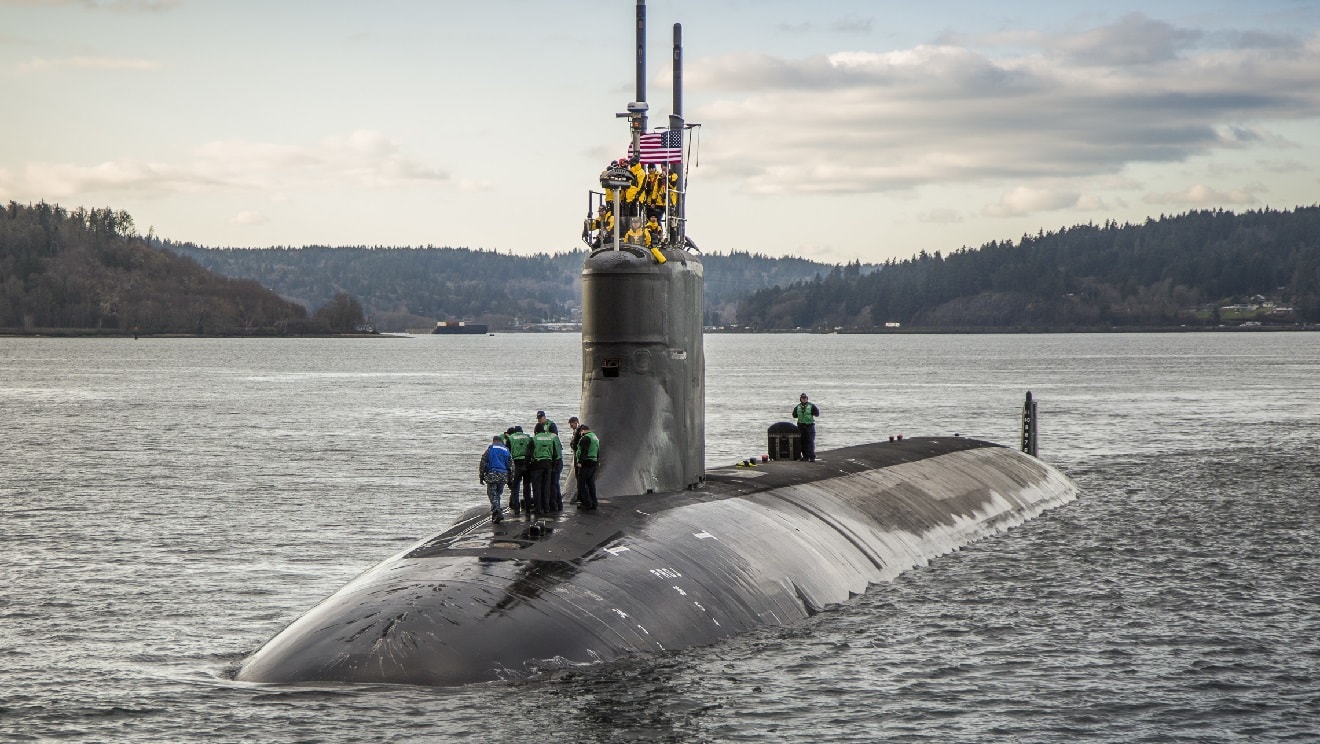Russia and China Hate US Navy Spy Submarines: Here’s Why – In October, a US nuclear-powered attack submarine collided with what is believed to have been an uncharted seamount while operating in the South China Sea.
The USS Connecticut suffered some damage, and several sailors were wounded during the collision. The Navy said on November 4 that it had relieved the sub’s senior leaders over the incident.
The Navy is investigating the incident and has not — and likely will not — disclose the nature of the USS Connecticut’s mission. But it is safe to assume that the sub was involved in strategic reconnaissance or even intelligence gathering.
It wouldn’t be the first time the Navy’s Silent Service has conducted such risky operations.
The Silent Service
The US Navy fields three major submarine types — ballistic missile, guided missile, and fast-attack submarines — totaling 68 nuclear-powered vessels of all types in service.
Ballistic-missile subs are the US nuclear triad’s maritime component. The 14 Ohio-class subs can each pack 24 Trident nuclear-armed ballistic missiles.
Four Ohio-class subs were converted to guided-missile subs in the 2000s and now pack up 154 Tomahawk missiles, for an impressive non-nuclear show of force. In addition to launching precision strikes, these four subs can also carry a dry-dock shelter from which Navy SEALs can launch mini-submarines and conduct operations.
The US Navy’s 50 fast-attack submarines — of the Los Angeles, Seawolf, and Virginia classes— primarily go after enemy vessels, but they can also conduct underwater strategic reconnaissance and can accommodate Navy SEALs and underwater drones with the addition of the multi-mission platform module.
Since submarines emerged as an effective platform, the governments able to build and maintain them have used them for overt and covert operations in war and during peace. The US Navy in particular has pulled off some impressive operations straight out of Hollywood.
Spying subs
During the Cold War, the US Navy and its submarines were on the frontline against the Soviet Union.
In 2013, the USS Jimmy Carter, an upgraded version of the already highly capable Seawolf-class subs, received the Presidential Unit Citation, the highest award a US military unit can receive and equivalent to the Navy Cross.
The award came after a classified operation in the South China Sea. The sub’s official history logged the operation as “Mission 7,” saying only that it “performed under a wide range of adverse and extremely stressful conditions without external support … in pursuit of vital national security goals.”
When the sub returned to its homeport in Washington state, it was flying the Jolly Roger flag, a tradition dating to World War II and signifies that the submarine either sunk an enemy vessel or conducted a successful operation. That operation might very well have been intelligence-gathering.
Interestingly, USS Connecticut and USS Jimmy Carter are both Seawolf-class subs and part of the secretive Submarine Development Squadron 5, which is responsible for testing new underwater listening gear and remotely piloted underwater vehicles.
According to the Navy, the unit works with civilian academic and scientific institutions “for tactical development, including unmanned undersea vehicles and naval special warfare.”
The missions of the USS Connecticut and USS Jimmy Carter conduct now are likely reminiscent of ones done by their Cold War predecessors.
Operation Ivy Bells and Project Azorian
In 1968, the Soviet diesel-electric ballistic-missile submarine K-129 sank with all hands while on patrol in the Pacific.
Despite several weeks of frantic searching, the Soviets couldn’t find the sub and recover its cryptographic devices, codebooks, and nuclear weapons. The CIA saw a great opportunity for an intelligence coup. It launched “Project Azorian,” an attempt to recover as much classified material as possible from K-129.
After the Soviets ended their search, the US Navy sent USS Halibut, a cruise-missile sub modified for intelligence missions, to locate the Soviet vessel.
After weeks of searching in a 1,200-square-mile area, the American sub managed to find the K-129. It later received a classified Presidential Unit Citation for its success.
In 1974, a CIA sent a salvage ship that managed to raise a section of the Soviet sub. The CIA has never fully disclosed what it found, but in 1992 the CIA gave Russia a recording of the burial at sea it conducted for the Soviet sailors recovered during the operation.
In a separate effort in the early 1970s, the US intelligence community sought to tap into Soviet military communications. Washington and Moscow were discussing how to contain their nuclear arsenals, and any intelligence on the Soviet’s position would have been golden.
A US Navy intelligence officer came with a proposal to tap an underwater communications cable connecting Soviet Pacific Fleet naval bases around the Sea of Okhotsk.
USS Halibut was once more sent into action for Operation Ivy Bells, as the cable-tapping mission was known. Divers from the sub successfully tapped the underwater cable, an extremely difficult task.
US divers periodically returned to the cable to replace the recorder — until 1981, when the operation was compromised and the Soviets recovered the device.
US submarines have likely conducted many similar missions in the decades since, and those operations have only gained importance in an era of renewed competition with capable adversaries — namely Russia and China.
Beijing has built military bases on manmade islands in the South China Sea, attempting to solidify its widely rejected territorial claims in what is one of the world’s most important trade routes.
The US and its and allies would want to monitor Chinese moves through a number of methods — including underwater surveillance — and provide that intelligence to their policymakers.
Stavros Atlamazoglou is a defense journalist specializing in special operations, a Hellenic Army veteran (national service with the 575th Marine Battalion and Army HQ), and a Johns Hopkins University graduate.

